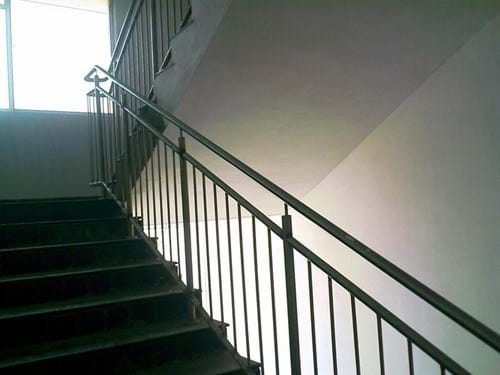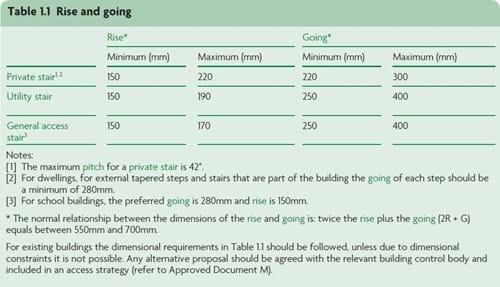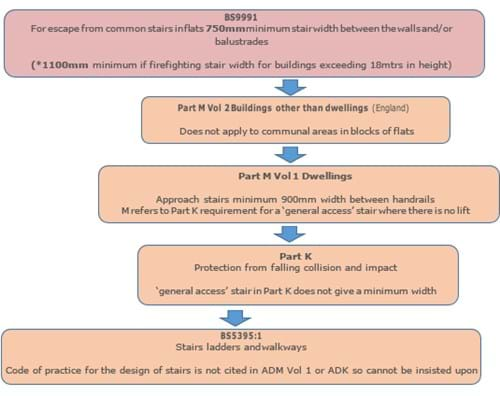For the purposes of this article, consideration has been given to the following guidance:
Approved Documents:
B Vol 2 Fire Safety in buildings other than dwelling houses (English and Welsh versions) K Protection from falling collision and impact (English and Welsh versions)
M Access to and the use of buildings Vol 1 Dwellings (England)
M Access to and the use of buildings Vol 2 Buildings other than dwellings (England) M Access to and the use of buildings (Wales)
British Standards:
BS 9991 Fire safety in the design, management and use of residential buildings
BS 8300 Design of buildings and their approaches to meet the needs of disabled people. BS5395-1 Stairs ladders and walkways. Code of practice for the design, construction and maintenance of straight stairs and winders.
Background
As land and construction costs increase, developers are under increasing pressure to maximise usable space and minimise redundant space in buildings. This inevitably puts more pressure on the availability of communal circulation space within apartment blocks.
The design and approval process for stairs should ensure that people’s movement in and around buildings is safe and accessible. In order to address the questions, what is safe and what is accessible, it is important to look at all related guidance and not just one area in isolation.
Often one set of guidance then refers to another. In some circumstances, different sources of guidance can appear to conflict with one another. All of which can complicate our interpretation, possibly leading to safety issues, uncertainty and inconsistency.
This can detrimentally affect the building user and puts our organisation at risk of claims. The inconsistency increases risks to our clients in design, construction, completion and could ultimately affect our clients’ willingness to use us.
|
Staircases should allow safe access, escape and fire rescue access where needed and the minimum requirements for these elements are covered by the Building Regulations.
So what is the required minimum stair width required in an apartment block?
In design compliance for buildings the minimum stair width will be the minimum to satisfy Building Regulations B (or BS9991), M and K, all at the same time.
For fire escape purposes from small blocks of flats BS9991 requires a 750mm wide stair.

Approved Document M Vol1 (England) refers to a ‘general access’ stair for common areas in flats, where a lift is not provided and a ‘utility stair’ if a lift is provided. AD M points to AD K for further guidance.

Approved Document K does not give guidance on the width of a ‘general access stair’, only for rise and going as above.
Interpretation

Conclusion
If the stair design complies with the Approved Documents, then it is deemed to satisfy the Building Regulations. Any higher standard than this adopted for Building Regulation compliance, such as BS5395, could be challenged by a developer. Accordingly, in normal circumstances, the acceptable stair width for apartment blocks would be as follows:
Minimum Stair Width for Communal Stairs in Flats
